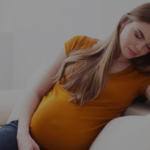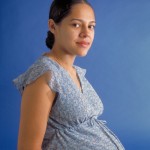Anxiety symptoms are common during pregnancy and the postpartum period. According to a recent meta-analysis from Fawcett and colleagues, about one out of every five women has at least one type of anxiety disorder during pregnancy or the postpartum period. In 2015, the American College of Obstetricians and Gynecologists issued a committee opinion recommending that clinicians screen patients at least once during the perinatal period for depression and anxiety symptoms.
What Tools Should We Use to Screen for Perinatal Anxiety?
Edinburgh Postnatal Depression Scale (EPDS): Most obstetric clinics use questionnaires, like the Edinburgh Postnatal Depression Scale, to screen for depression. While this screening tool was specifically designed to screen for depression, it does include questions about anxiety symptoms and can be used to identify women with anxiety disorders.
The EPDS-3A is a shortened form of the EPDS which consists of three questions comprising the EPDS anxiety subscale:
- I have blamed myself unnecessarily when things went wrong
- I have been anxious or worried for no good reason
- I have felt scared or panicky for no very good reason
A cut-off score of 6 or higher is used to identify pregnant and postpartum women with anxiety disorders. Although the usefulness of the EPDS-3A in detecting anxiety disorders has been empirically shown, there is concern that this method of screening tends to produce high rates of false positives. In addition, the EPDS-3A may not be able to reliably distinguish women with anxiety from those with depression, underscoring the importance of more in-depth evaluation to make an accurate diagnosis.
Perinatal Anxiety Screening Scale (PASS): The Perinatal Anxiety Screening Scale or PASS was designed to specifically screen for a broad range of anxiety symptoms during pregnancy and the postpartum period. This 31-item questionnaire is easy to complete and score, is sensitive to how anxiety presents in perinatal women and may be used in a variety of settings. This scale assesses four categories of anxiety: (1) acute anxiety and adjustment, (2) general worry and specific fears, (3) perfectionism, control and trauma and (4) social anxiety.
PASS identified 68 % of women with a diagnosed anxiety disorder, compared to the EPDS-3A which detected only 36% of women with anxiety disorders. While screening tools like the EPDS-3A are dichotomous (identifying anxiety vs. no anxiety), the PASS may be used to quantify the severity of anxiety symptoms based on the total score: minimal anxiety (PASS score of 0-20), mild-moderate anxiety (score of 21-41), and severe anxiety (score of 42-93). Being able to use this screening tool to distinguish milder from more severe anxiety symptoms will help to make appropriate referrals and identify those women with the most urgent needs.
Generalized Anxiety Disorder 2- and 7-Item Scales (GAD-2 and GAD-7: The GAD-7 and its abbreviated version, the GAD-2, are commonly used to screen for anxiety disorders in non-perinatal populations. In a recent study comparing several different screening tools for perinatal anxiety, the GAD-7 outperformed the GAD-2, EPDS, and EPDS-3A (Fairbrother et al, 2019).
The GAD-7 achieved an area under the curve, or AUC value, of less than 0.8. The AUC measures the ability of the test to correctly classify those with and without the disease. An AUC of 0.8 is considered good for a screening test. The GAD-7 missed the mark.
Other Screening Tools: The Anxiety Disorder – 13 Scale (AD-13) was used in the Fairbrother study (mentioned above) as an alternative to the EPDS and GAD for screening for anxiety disorders. The AD-13 was derived from other questionnaires commonly used to identify the core symptoms of five types of anxiety disorders (generalized anxiety disorder, panic disorder, OCD, PTSD, and social anxiety disorder). In the Fairbrother study, the only self-report measure which performed well enough to be recommended for screening (having an AUC greater than 0.8) was the AD-13. (As far as I know, the AD-13 has not been used or validated in other studies.)
What improves the ability of the AD-13 to screen for anxiety disorders in this setting is that this questionnaire covers a much broader array of symptoms, including panic attacks, social anxiety, obsessions, compulsions, intrusive thoughts, distressing memories, and hypervigilance. For example, the EPDS and EPDS-3A asks only about feelings of anxiety, fear, panic and self-blame, and the GAD-2 asks only about feelings of anxiety and worry.
What About Screening for PTSD?
It is noteworthy that most of the tools we commonly used in this setting may fail to identify many women with anxiety disorders, specifically PTSD. Given the high prevalence of PTSD in pregnant and postpartum women and the negative impact of PTSD on pregnancy outcomes and parenting, any efforts to screen for perinatal anxiety disorders must include instruments which screen for PTSD.
However, screening for PTSD in perinatal women is not so straightforward. While there are several different instruments used to screen for PTSD in primary care settings, these screening tools focus on more traditional forms of trauma, such as physical or sexual assault, experiencing life-threatening events or natural disasters, or witnessing someone being killed or seriously injured.
Because PTSD unrelated to childbirth may predict worse outcomes, it is important to screen for PTSD in this population. However, many child-bearing women experience PTSD in the setting of pregnancy and childbirth, and these instruments may fail to identify this group of women given the type of trauma they have experienced. The City Birth Trauma Scale (Ayers et al, 2019) is a 29-item questionnaire developed to measure birth-related PTSD according to DSM-5-specific symptoms. Other studies have screened for PTSD symptoms using the PTSD symptom checklist, substituting “childbirth” as the index event.
Future Directions:
The ideal screening tool is one that is quick and easy to use, an instrument which is relatively accurate (low rates of false positives) but, at the same time, does not miss too many women with illness (low rates of false negatives). At this point, there is no perfect screening tool. The AD-13 is the tool most likely to identify women with a broad spectrum of anxiety disorders; however, it has not been used extensively or validated in other studies. We might consider using the PASS, which is better than EPDS or GAD-7 for detecting panic, OCD and social anxiety; however, we would have to combine it with another tool to screen for PTSD symptoms.
No matter what screening tools we decide to use, screening is just the first step. Screening instruments identify symptoms but are not necessarily diagnostic tools. For example, when you look at women who screen positive on the EPDS, which is the tool used most commonly to diagnose depression, only about a third of the women who screen positive on the EPDS have a major depressive disorder (31.4%). The other women who screen positive have bipolar disorder (13.1%), anxiety disorders (60.8%, including OCD (17.6%), dysthymia (5.2%), somatoform disorder (11.8%), current substance abuse (4.6%), and eating disorder (2.0%). Thus, while the EPDS may be good at identifying women with some type of psychiatric illness, its capacity to serve as a diagnostic tool and to guide treatment decisions is very limited.
As we approach the task of screening perinatal women for anxiety disorders, not only must we be careful to select screening tools that are appropriate for the perinatal population, we must be aware of their limitations. But even if we did find the perfect screening tool, we need to do more. While obstetric providers have stepped up to the challenge of universal screening for depression and anxiety, we have also seen that screening alone does not necessarily lead to improved outcomes. Despite recent efforts to increase awareness among women and their providers, many women identified as having depression or anxiety do not or are not able to receive appropriate care.
Ruta Nonacs, MD PhD
Ayers S, Wright DB, Thornton A. Development of a Measure of Postpartum PTSD: The City Birth Trauma Scale. Front Psychiatry. 2018 Sep 18;9:409. Free Article.
Byatt N, Masters GA, Bergman AL, Moore Simas TA. Screening for Mental Health and Substance Use Disorders in Obstetric Settings. Curr Psychiatry Rep. 2020 Sep 16;22(11):62. Review.
Fairbrother N, Corbyn B, Thordarson DS, Ma A, Surm D. Screening for perinatal anxiety disorders: Room to grow. J Affect Disord. 2019 Mar 8; 250:363-370.
Fawcett EJ, Fairbrother N, Cox ML, White IR, Fawcett JM. The Prevalence of Anxiety Disorders During Pregnancy and the Postpartum Period: A Multivariate Bayesian Meta-Analysis. J Clin Psychiatry. 2019 Jul 23;80(4):18r12527. Free PMC article.
Somerville S, Dedman K, Hagan R, et al. The Perinatal Anxiety Screening Scale: development and preliminary validation. Arch Womens Ment Health. 2014 Apr 4.
Somerville S, Byrne SL, et al. Detecting the severity of perinatal anxiety with the perinatal anxiety screening scale (PASS). J Affect Disord 2015; 186:18-25.
The Psychometric Properties of the Patient Health Questionnaire-4 for Pregnant Women
Screening Tools:
EPDS: Electronic Version of EPDS with Scoring and Interpretation
EPDS-3A: Printable Version of the EPDS-3A with Instructions for Scoring
GAD-2: Electronic Version of GAD-2 with Scoring and Interpretation
GAD-7: Electronic Version of GAD-7 with Scoring and Interpretation
PASS: Printable Copy from the Western Australia Department of Health









Leave A Comment